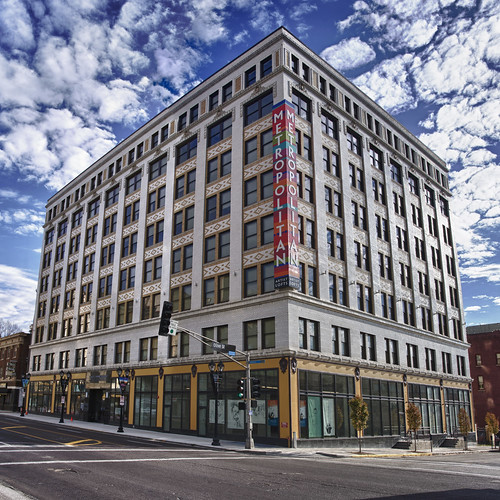
As readers know, typically my posts focus on the destruction of historic architecture in St. Louis. This post however focuses on a building that I have had the pleasure of working on... twice, and has survived against the odds, having been rehabilitated and restored for the future. Tonight is the official grand re-opening, although the building has been occupied since early September.
The Metropolitan Building, designed by the architectural firm of Mauran, Russell & Garden and atypically clad in white glazed brick with gold accents was built in 1907 as an office building for doctors. In 1977, when Landmarks Association nominated the Midtown Historic District to the National Register, the eight story Metropolitan was vacant except for a handful of first floor retail spaces. In late 2005, when I first entered the building as the architect with the Pyramid Companies, 28 years of vacancy and a complete lack of maintenance had taken its toll on the building.
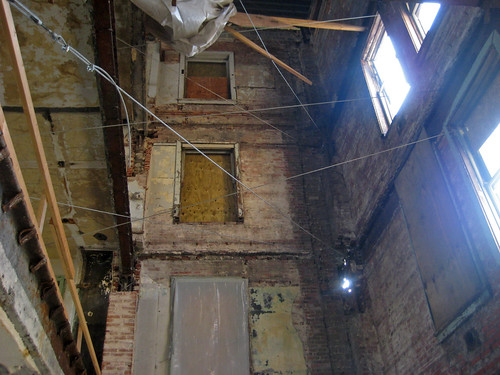
The structure of the building was an unusual mix of cast iron columns, steel beams and cinder concrete floor slabs reinforced not with typical round bars, but 1/8" thick steel straps. The problem with cinder concrete is that when it gets wet, it creates sulfuric acid, which does bad things to steel straps. The north wing of the building was in the worst condition, with one structural bay at the east end collapsed down to the 4th floor and gaping holes down two more floors. A similar condition existed near the central elevator core with a gaping hole trough the slabs down to the third floor. Many other slabs at the roof and upper floors of the north wing were crumbling and nearing collapse.
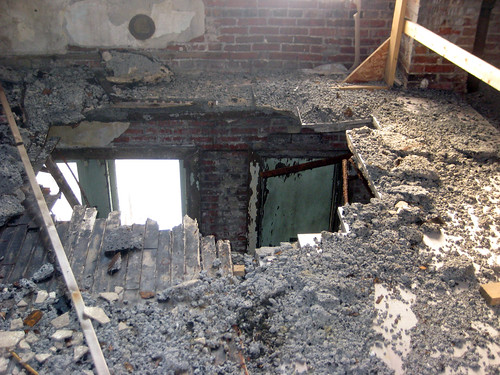
While the Metropolitan Building was never technically threatened with imminent demolition, the building's condition sent many would-be developers running scared. While giant slabs of asphalt and vacant lots continue to thrive, Grand Center had been no stranger to large scale demolitions over the years. In 1997, just one year before the enacting of the Missouri Historic Rehabilitation Tax Credit, the 10-story Beaumont Medical Building on Washington Blvd., which had none of the structural problems of the Metropolitan, was imploded to make way for construction of the Pultizer Foundation for the Arts, which was originally going to be built on the site where Channel 9 eventually built. Just prior to the Beaumont's demise, the 5-story Raleigh Apartments was demolished for a parking lot for the Sheldon.
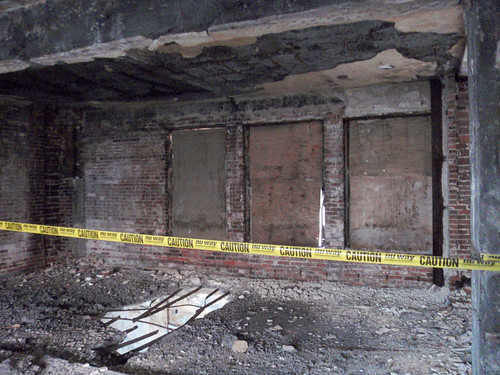
Pyramid Companies, however had confidence that the Metropolitan could be restored, but it would take significant measures not required in typical historic rehabilitations. Because of the condition of the structure on the upper floors and the uncertainty of the condition of the thin reinforcement straps in other areas of the building, the structural engineer determined that all areas of the floor would need to receive supplemental structural support.
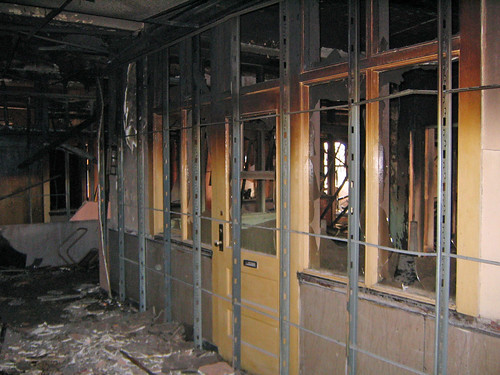
In late 2006-early 2007, Pyramid Companies hired Environmental Operations, Inc. to complete selective interior demolition throughout the building. Most partitions outside of the corridors were removed at that time, but before finishing, a fire caused by sparks damaged a portion of the second floor.
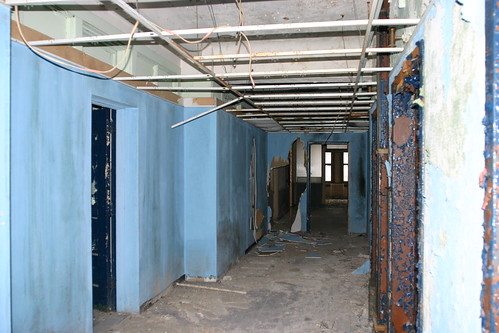
A view of another corridor that had been "modernized" prior to the selective interior demolition.
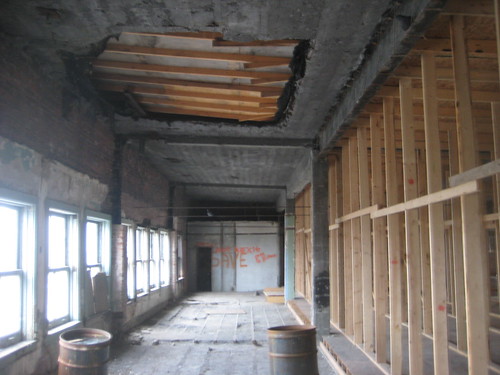
Following Pyramid's closure in 2008, the bank that took possession of the building had temporary shoring installed in areas of the 7th & 8th floors where the structure had been weakened by years of deterioration. The roof was also patched and the building was mothballed. In 2010, Dominium Development of Minneapolis became interested in the Metropolitan and was confident they could complete a rehabilitation of the building for affordable artist loft apartments. They were awarded Low Income Housing Tax Credits by the Missouri Housing Development Commission.
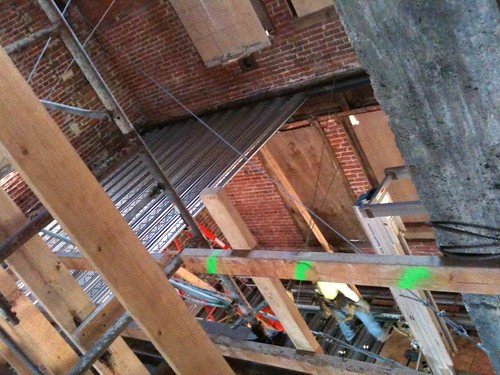
In mid-2011, construction began, which included re-building collapsed and deteriorated sections of floor and roof. The same structural metal deck seen above was also hung from the beams under all other remaining sections of floor as reinforcement due to the unknown condition of the steel straps that had been exposed to 30 years of weather.
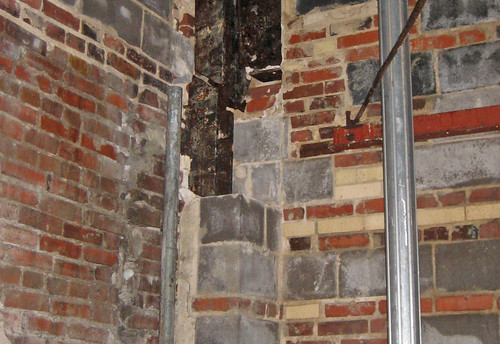
During construction several instances of cracked cast iron columns were found which required additional structural repair.
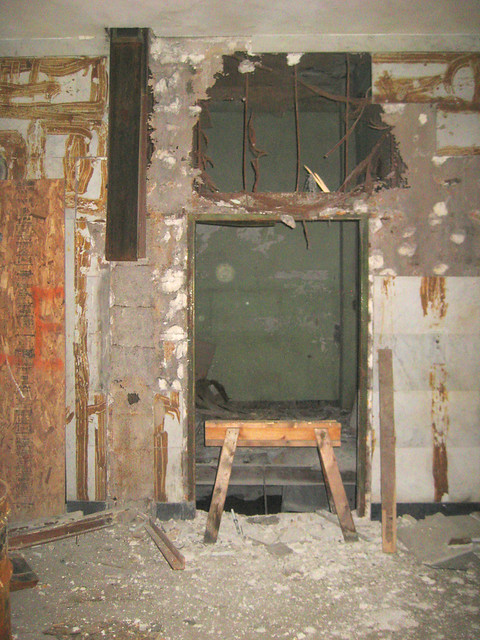
The condition of the first floor elevator lobby prior to re-construction.
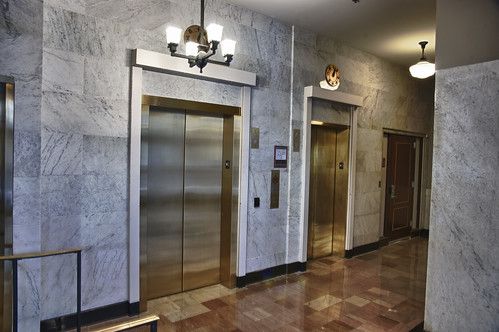
Restoration of the Metropolitan was completed in late August of this year, with new residents moving in shortly thereafter. The building was mostly pre-leased, and quickly reached 100% occupancy. The restored fist floor elevator lobby is pictured above.
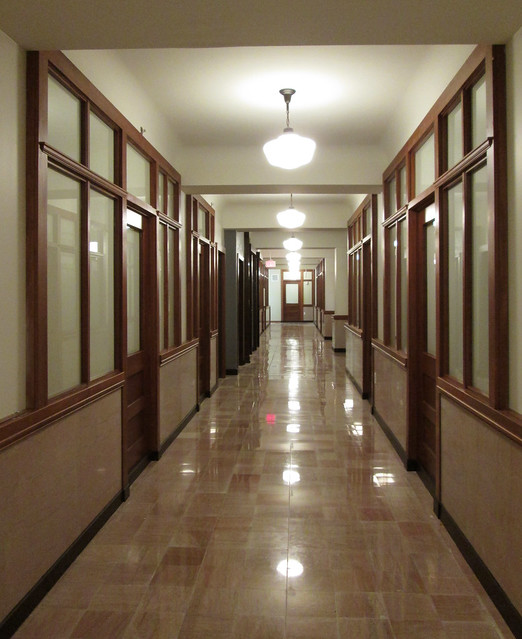
With the use of Missouri and Federal Historic Rehabilitation Tax Credits, surviving historic features of the building were either restored or replicated. Corridors were returned nearly to their original appearance on floors 2-4.
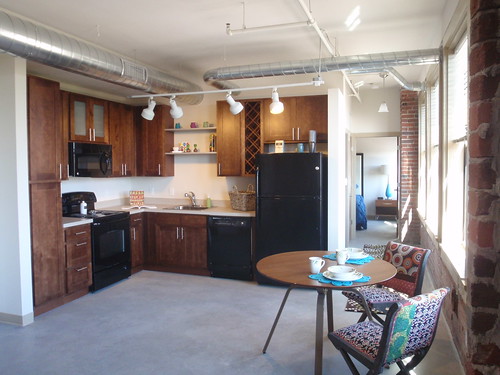
Typical loft apartments feature new polished concrete floors, either brick or original plaster exterior walls (depending upon what existed) restored window trim and new finishes throughout the remainder of the residence.
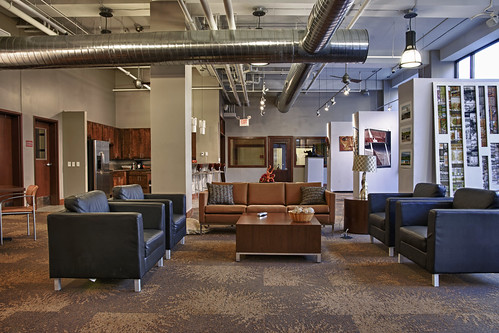
A spacious first floor community room is available for residents and includes a gallery area along the Grand Boulevard storefront windows for the artists to display their work. There are also common art studios on the first floor and basement, a dance studio, fitness room and four music studios for use by the resident artists. A retail space at the corner of Grand & Olive will hopefully have a new computer store specializing in Macs opening in the spring of next year.

3 comments:
Amazing rehabilitation - it makes me wish I was an artist so I could live there! Congratulations to everyone involved in the project. Fantastic job.
Thanks!
The Metropolitan Building went through a lot of repairs and restoration over the years. The change surely is impressive. One would not have imagined that its condition was already good for demolition because of the fire, its poor maintenance, and the corrosion of the materials.
Thelma Bowman
Post a Comment